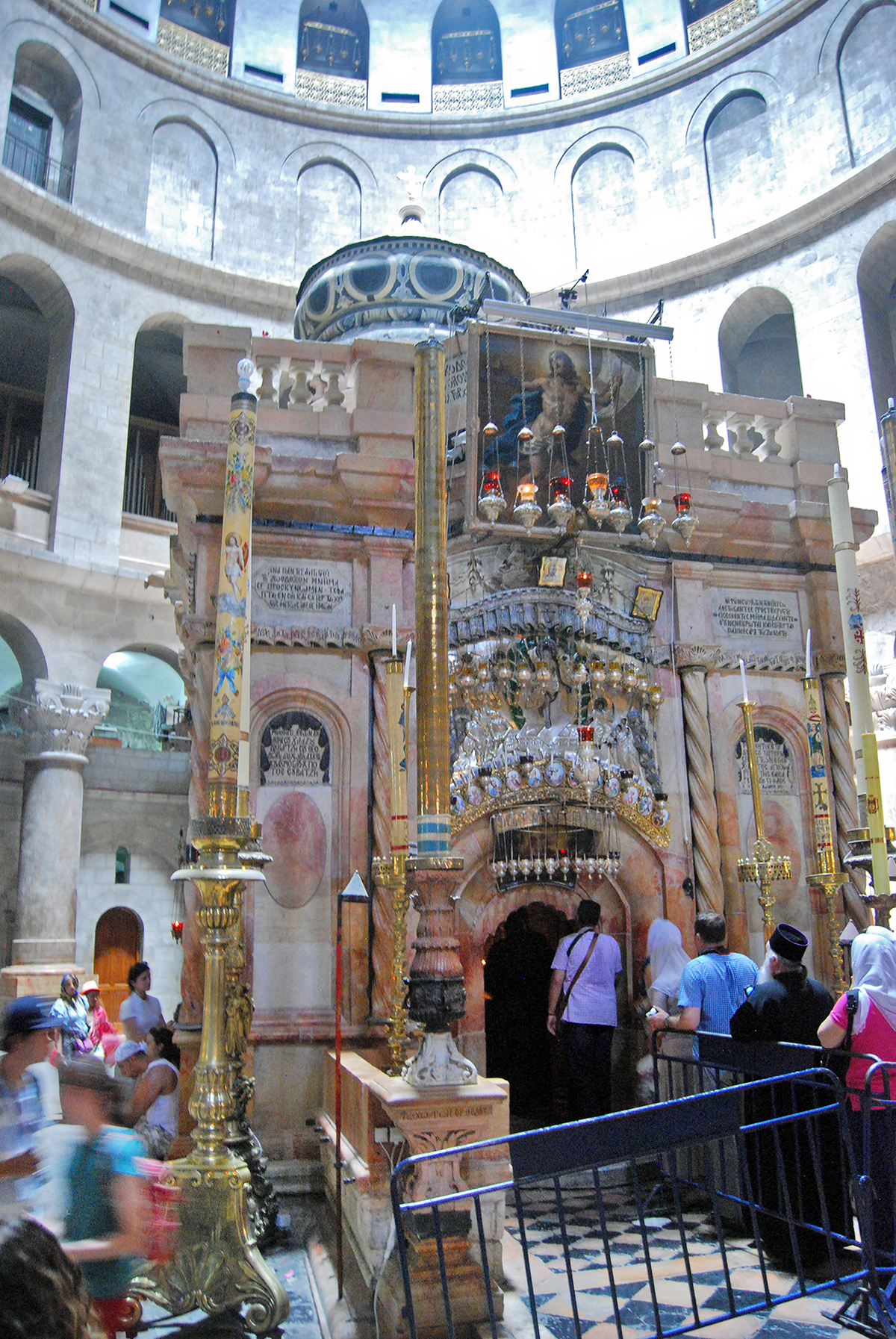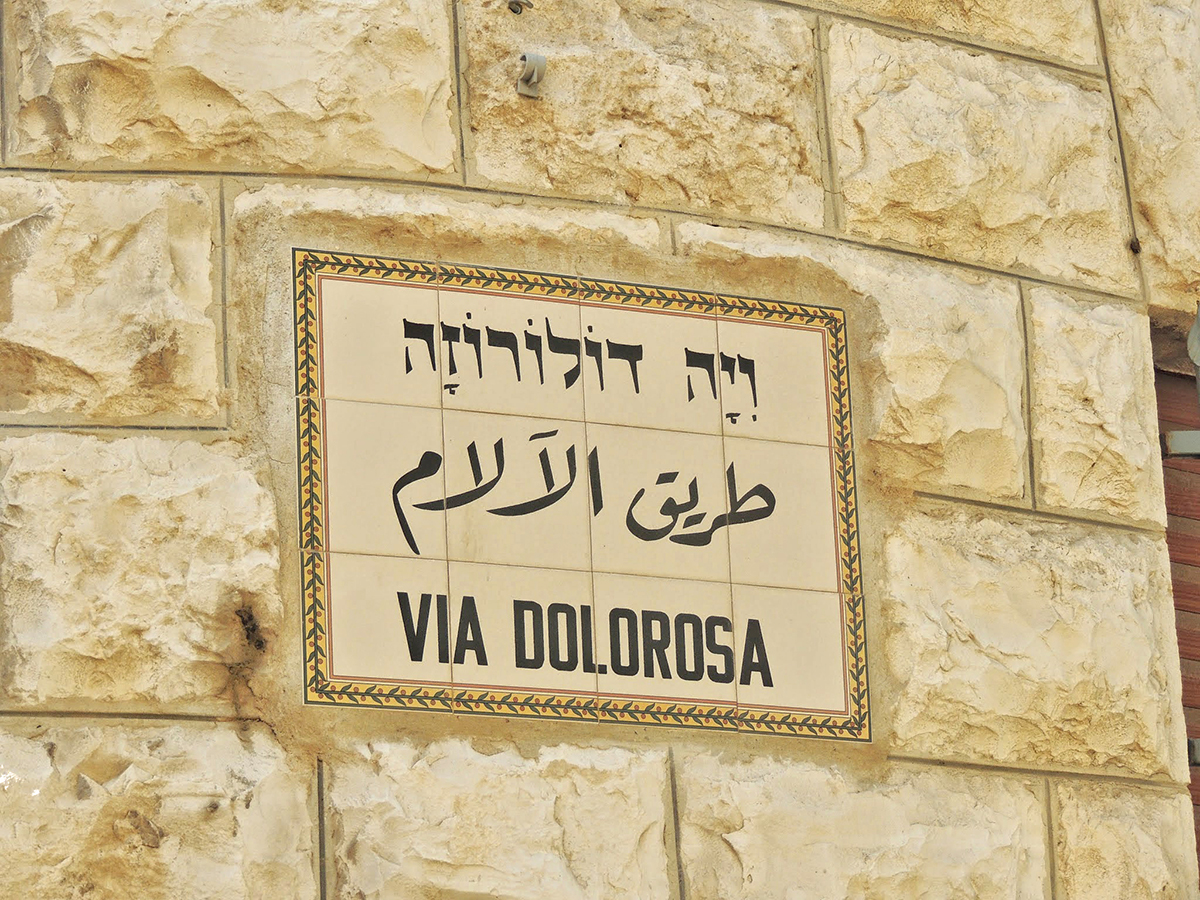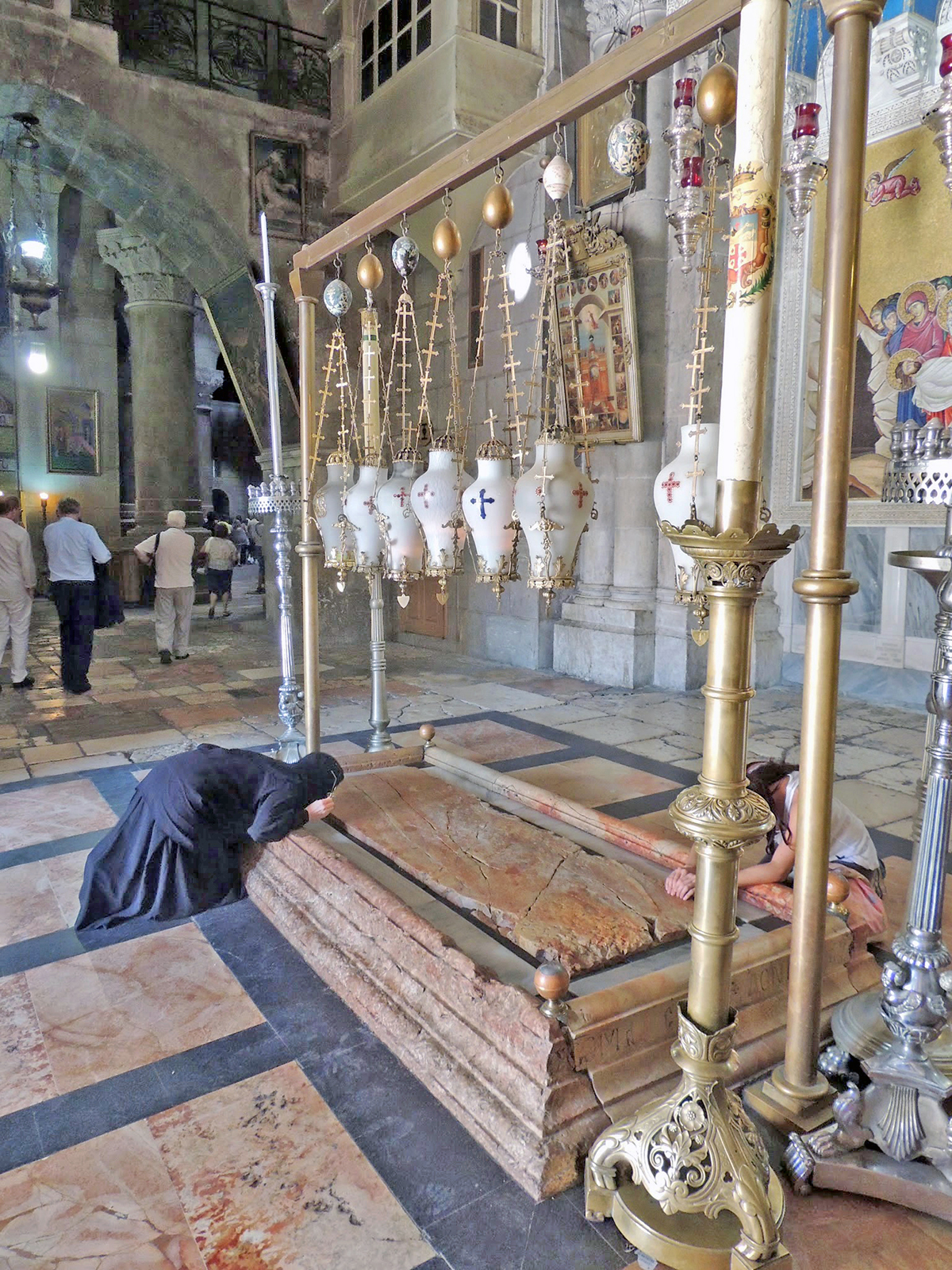

by Barry Britnell
Synopsis: When you take a closer look at the Via Dolorosa's Stations of the Cross, you soon realize that they are not all scripturally accurate.
In today's world, we are presented with so much "factual" information. Such information is often presented as a confirmed truth and should not be disputed. This is especially true when you travel to Israel. Different religious organizations will attempt to tell you that specific locations are actual locations with only sketchy information to confirm such a claim.
Such is the case with the Via Dolorosa (i.e., the "Way of Sorrows") that wanders through the Old City of Jerusalem and is supposed to mark the exact path that Jesus took between the location where Pilate gave his sentence to the site of the crucifixion. A few months ago, I wrote an article for Truth Magazine in which we discussed the current path of the Via Dolorosa. In summary, I believe that the current route of the Via Dolorosa is probably not correct, and I encourage you to go back and read it.
In this article, I would like to take a closer look at the Via Dolorosa's "Stations of the Cross." These fourteen stations are supposed to represent fourteen different events that occurred as Jesus was making his way to Golgotha. However, as you will see, there are significant differences in what is presented to people when they visit Jerusalem and what is revealed to all of us in Scripture. Let's take a closer look at these stations and discuss what they mean and what can be confirmed by Scripture.
Station #1—Jesus is sentenced to death by Pontius Pilate. This event is recorded in all four Gospels (Matt. 24:26; Mark 15:15; Luke 23:24-25; John 19:16).
Station #2—Jesus takes up His cross. This event, where Jesus is forced to carry a portion of His cross part of the way to Golgotha, is recorded in John 19:17.
Station #3—Jesus falls for the first time. Having been scourged and beaten, it is logical to assume that Jesus struggled in making His way to Golgotha. However, it is never mentioned in Scripture that He fell to the ground.
Station #4—Jesus's mother, Mary, watches her Son pass. As we know from John 19:25, Mary was, at least temporarily, at the cross of Jesus. However, the Bible does not record any encounter that Jesus had with her along the route to Golgotha.
Station #5—Simon of Cyrene is forced to carry the cross. As Jesus walked to Golgotha, a man was pulled out of the crowd and forced to carry the cross on behalf of Jesus. This event is recorded for us in three of the Gospels (Matt. 27:32; Mark 15:21; Luke 23:26).
Station #6—Veronica uses her veil to wipe the face of Jesus. It is believed that Jesus's face was impressed on this cloth, which is currently housed in St. Peter's Basilica in Rome. However, this event is never mentioned in Scripture.
Station #7—Jesus falls for a second time. Again, this event is not mentioned in Scripture.
Station #8—The daughters of Jerusalem weep for Jesus. This event is mentioned in Luke 23:27-31.
Station #9—Jesus falls for a third time as He arrives at Golgotha. Once again, while this could have happened due to Christ's weakened physical condition, this event is not mentioned in Scripture.
Station #10—Jesus is stripped of His clothing. This event is recorded in all four Gospels (Matt. 27:35; Mark 15:24; Luke 23:34; John 19:23-24).
Station #11—Jesus is nailed to the cross. This event is not explicitly mentioned in the crucifixion account. However, after His resurrection, Jesus is with His disciples, where He shows them the scars in His hands (John 20:20). Thomas, who is not present, later declares, "Unless I see in his hand the mark of the nails and place my finger into the mark of the nails, and place my hand into his side, I will never believe" (John 20:25). Eight days later, Jesus sees Thomas and says, "Put your finger here and see my hands; and put out your hand and place it in my side" (John 20:27). It is evident from these passages that Thomas knew that Jesus had been nailed to the cross and would not believe in the resurrection until he saw those scars. Later, Jesus showed him what he wanted to see. [Note also Peter's sermon on Pentecost (Acts 2:23) and Paul's epistle to the Colossians (Col. 2:14), MM]
Station #12—Jesus dies on the cross. This event is recorded in all four Gospels (Matt. 27:50; Mark 15:37; Luke 23:46; John 19:30).
Station #13—Jesus's body is prepared for burial. This event is recorded in all four Gospels (Matt. 27:59; Mark 15:46; Luke 23:53; John 19:39-40).
Station #14—Jesus's body is buried in the tomb. This event is recorded in all four Gospels (Matt. 27:60; Mark 15:46; Luke 23:53; John 19:41-42).
When walking through Jerusalem, people who are not familiar with Scripture will present these events as actual historical facts. However, upon closer examination, you realize that five of these fourteen events are not even mentioned in Scripture.
One does not have to travel to Israel to have a misunderstanding about this. As I have participated in teaching opportunities on this topic, several Christians have emphatically stated that some of these non-documented events are recorded in Scripture. Upon closer study, they soon realize that they had also accepted something as fact without double-checking such information for themselves.
While it is easy to blame people when this happens, it is quite understandable. In this day and age, we have access to so much information. Often, this information can be presented in a very professional way, and it is easy to accept unfounded assertions as truth.
As I close, let me encourage you to do two things: (1) Study God's word. Listen to what people say and read what people write. However, we should compare everything to what God says in His word; (2) Teach others. Use these common misunderstandings as opportunities to start conversations with people about God's word. You never know what might happen when people learn that something as simple as the Stations of the Cross is not all biblically accurate.
Author Bio: Barry is the founder of Exploring Bible Lands, LLC (exploringbiblelands.com) and leads Bible study tours to the land of Israel. He also works with Appian Media (appianmedia.org) to produce biblically-sound videos used in teaching others about the Bible. Barry and his wife, Tabatha, have three children, live in Athens, AL, and worship with the Capshaw Church of Christ.

Image 1: The edicule within the Church of the Holy Sepulture that covers the traditional site of the burial of Jesus.

Image 2: The Ecce Homo arch along the Via Dolorosa, Latin for "Behold the Man."

Image 3: A street sign in Jerusalem.

Image 4: Along the Via Dolorosa, Station #6 represents a non-biblical event of a woman named Veronica wiping the face of Jesus.

Image 5: The Church of the Holy Sepulture, a large building constructed on top of the traditional locations of Golgotha and the burial site.

Image 6: The "Stone of Anointing," the traditional location of where Jesus' body was prepared for burial.

Image 7: A large mosaic within the Church of the Holy Sepulture depicting Jesus' body being prepared for burial.